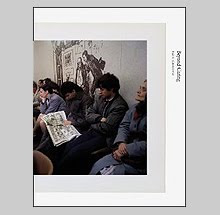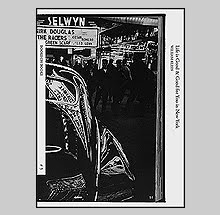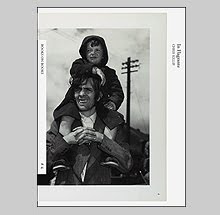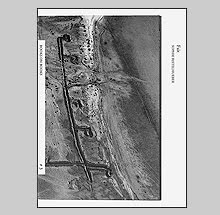Three books by Pierre Verger

Pierre Verger is probably known to most photographers today as “that third guy” whose work was featured in From Incas To Indios alongside Robert Frank and Werner Bischof. And, unfortunately, many have not done further research into this remarkable artist probably due to some short sightedness from having little name recognition. Regardless of the reason, I would challenge that in that book, Verger proves himself to have produced the most interesting work of the three. One thing is for sure, Robert Delpire wouldn’t have had a book without Verger’s contribution to the project. Verger, after all, has more work reproduced in that title than the other two more famous photographers.
Born in 1902, Verger turned to photography in 1932 after being taught by Pierre Boucher. After the death of his mother, he realized his wanderlust and for the next 14 years he traveled the world making a living as a photographer.
In the late 1940’s, Verger studied African religions and became so immersed in the subject that the French Institute for Black Africa requested details his accounts during his travels for their own studies. This association with anthropological study would unintentionally become his life’s passion. He was the author of many books and his photographs have been used to illustrate well over 100 titles. He died in February of 1996.
One title that has come to my attention is Indians of Peru published by Pocahontas Press in 1950. This is an interesting title for many reasons. Firstly, the photography featured is fine in its variety of approach and ability to convey a sense of a culture.
What is also wonderful about this book is the sequence. It is a sequence of photographs that introduces us to the landscape and population as would a film or an extended photo essay. Although the book is broken into five sections that relate to different regions of Peru, all connect to a central flow of images from page to page. Beyond being simply a cold ethnographic study or a tourist’s observations, Verger seems to be one of the pack and is accepted as such.
On a different note however, the production of the book has its own curiosities. Mainly that in the credits, Walker Evans is acknowledged as assisting in the preparation of the book. It isn’t said that he designed the book or specifically what assistance he gave, only that he assisted in its production. This is a curious fact, because if you compare Indians of Peru to Evans’ American Photographs, they are the exact same trim size. The fonts of the title are the same as the fonts used for American Photographs and the layouts of the text are similar although American Photographs uses blocks of text broken into two columns to a page.
The main difference comes in the way of the page layouts for the photographs. American Photographs, as we know, has one image to a page. In the Verger title, the layout is a much more energetic, with page spreads harnessing several images at a time. There are even several images bled to the page edge. This, on first glance, may seem like too much of a departure from Evans’ design style unless you consider the following. Since the book was made around 1950, one might make the connection that Walker Evans had been working at Fortune magazine for several years where he was experimenting with page layouts and the handling of several images in arrangement as was necessary for a magazine format.
One very interesting similarity is, when Walker Evans designed American Photographs it is believed that he, in a way, paid homage to Atget in his choice of the first image in the book by using the “Photo Studio building” image with its doorway and hand painting pointing towards the entrance. Atget had used a similar image as the introductory image in his Weyhe book from 1930. Walker had reviewed that book for a publication and was very familiar with Atget, even citing him as an influence. Both images offer the image of a doorway as if serving the metaphoric invitation of the viewer to “enter the photographer’s world.” Much like these two predecessors, in the Verger’s Indians of Peru, the first image is of a stone portal that begins the journey into the book.
I may be reading too much into comparisons with this next statement but the second picture in American Photographs is the photo studio window image that features all of the tiny portraits of Americans and the second image in the Indians of Peru is of a stone wall. Both images were made with the camera square to the subject and both segment up the image into essentially 12 parts. Both of these images work in the same way but arrive at obviously different meanings. Unless of course you take into consideration that the wall Verger is pointing us to would have taken a multitude of people to construct.
The last similarity is a simple one, both American Photographs and Indians of Peru contain the exact same amount of photographs. 87.
It is because of these similarities and moments in history that one might assess that Evans had a strong hand in the design of the book. Some of the other names in the “acknowledgements” section that Evans is mentioned are the financial backers of the book that Evans may have known. This is potentially how the project might have landed in his hands.
Another curious note is that Robert Frank knew of this title as well. To a friend he identified it as, “that book with the red endpapers.” (Unlike American Photographs, this title has beautifully saturated, blood red endpapers.) Whether Frank was familiar with Pierre Verger’s other title published in 1945 Fiestas and Dansas En El Cuzco Y En Los Andes before making his own trips to Peru in 1949, is not known.
To create even more of a mystery, a friend of mine actually met with Pierre Verger in Bahia, Brasil and asked him some questions about this book. Turns out, that even in the early 1990’s, Verger didn’t seem to know who Walker Evans was. He stated that he purposely did not look at a lot of photography during his pursuits so as not to be influenced negatively in regard to finding his own voice.
That does pose the question, if Walker was the main design influence on this title, wouldn’t Verger at least know who was responsible? One theory is, Verger was either so invested in his studies, or perhaps he was so difficult to get a hold of for those years, that when he would agree to do a book, he would just send the work to his publishers in Paris and be done with it.
It should be said though that regardless of whether Evans had a hand in the design of this book or not, it is a fine example of work by this underrated yet accomplished artist. The work does not require the validation of Evans to be seen in its own right. This small investigation just adds to the history and connection of this work to a wider wading pool of acknowledged fine artists.
Fiestas and Dansas En El Cuzco Y En Los Andes was published in 1945 by Editorial Sudamericana Sociedad Anonima and a second edition appeared in 1951. This may be one of the few books that Verger actually had a hand in putting together beyond just being the photographer. The publisher was in Buenos Aires, Argentina which was at least close to his home in Brasil. The dedication is to “A Monsieur Et Madame Jean Menil” the couple behind the famed art collection now housed in the Houston-based Menil Collection museum.
As the title suggests, it is a study of the festivals and dances of Peruvian and Andean culture. Verger seemingly moves freely around his subjects and for the most part is ignored even when he moves in super close filling the frame of his Rolliflex with a face. It is a book filled with variations of costuming and masks that often show a blending of cultures due to the influence of the outside world.
This influence is acknowledged as one caption reads: “Chileans, too, appear in some of these dances; they are usually cattle-drivers and traders, and in their company usually appears a personage in frock-coat and top hat who is easily recognizable as the lawyer; and here are the Argentines with their ponchos and muleteer’s lassoes.”
The book is nicely designed and is letterpress printed. The reproductions have a nice quality but aren’t particularly rich. The paper stock is nice and heavy making the whole book feel nice and substantial. This title, like many other early Verger titles, is very inexpensive and relatively easy to find. Be sure to do your research though as he has images in over 100 titles and some have only a few images. There is a great bibliography of Verger at www.pierreverger.org .
Giving credit where it is due, the fine photographer Edward Grazda is the person who brought most of the similarities between these two books to my attention. We should all gratefully acknowledge his scholarly insight into this fascinating connect-the-dots approach to widening the understanding and history of this medium.
Book Available Here (Fiestas and Danzas 1951 2nd ed.)
Book Available Here (Indians of Peru)
Book Available Here (Incas to Indians)











